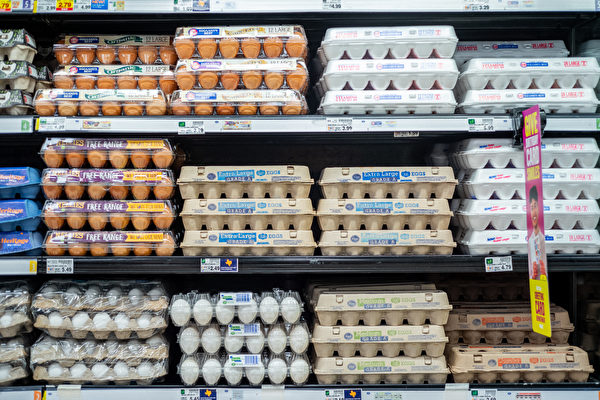Many shoppers have a common question when going to the supermarket: why are brown eggs more expensive than white eggs?
The answer may not be what you think: it’s not about one color of eggs being healthier, more natural, or more special than the other, but rather it’s about the fundamental principles of agricultural economics. It costs more to keep the hens that lay brown eggs happy and well-fed.
The color of the eggshell is the main distinction between brown eggs and white eggs, and it depends on the hens that lay them. The structure of both brown and white eggs is the same, with different hens producing different colored eggs. A hen with brown feathers and red earlobes may lay brown eggs, while a hen with white feathers and white earlobes will lay white eggs.
“Basically, there is no nutritional difference between brown eggs and white eggs. It all depends on the breed of the hens,” explained Daniel Brey, owner of Brey’s Egg Farm, a fourth-generation family egg farm located in Jeffersonville, New York, which produces over 200,000 white eggs daily.
Some breeds, like the White Leghorn chicken, lay white-shelled eggs, while others, like the Rhode Island Red chicken, lay brown-shelled eggs. According to Brey, the cost and taste of the eggs you buy (whether brown or white) depend on the type and amount of feed given to the hens.
“The feed for the hens plays a significant role in this,” Brey said. “It costs more to produce a dozen brown eggs because the hens that lay them tend to eat more.”
In supermarkets in North America, brown eggs are often priced higher.
“Eggs come in various colors, not just white and brown. Depending on the breed, some eggs can even be blue or green,” said Joan Frank, Assistant Director of the Nutrition Program at the University of California, Davis.
However, she emphasized that the nutritional value of eggs does not differ based on the color of the shell.
“I think consumers have started to believe that brown eggs are healthier for some reason, but that’s not the case,” Frank said.
Traditional brown eggs in most stores are priced between $4.50 to $6. According to the latest government data, a dozen white eggs in stores is priced around $2.50, higher than $1.50 a year ago. Some farms sell large brown eggs or organic eggs at even higher prices.
CNN reported that Phil Lempert, a food industry analyst and editor of SuperMarketGuru.com, estimated that consumers generally pay more for brown eggs compared to white eggs. He said, “If you have white eggs next to brown eggs, you typically pay 10% to 20% more for brown eggs, whether they are free-range or organic.”
David Anderson, an agricultural economics professor specializing in livestock economics at Texas A&M University, has researched egg pricing on farms and in supermarkets, as well as the factors influencing pricing.
He mentioned that egg prices usually react to demand fluctuations regardless of the color of the eggshell. “There are some short-term seasonal activities, such as Easter, where we always see an increase in egg demand. In the fall, we also see increased demand for eggs due to holiday baking activities,” Anderson said.
Factors influencing egg prices also include the cost of chicken feed.
On the other hand, the recent outbreak of avian flu may lead to higher egg prices compared to last year. If egg producers have to cull their flocks due to avian flu, they may not be able to meet demand, leading to price increases.
When it comes to choosing between brown and white eggs, it all depends on your personal preference.

